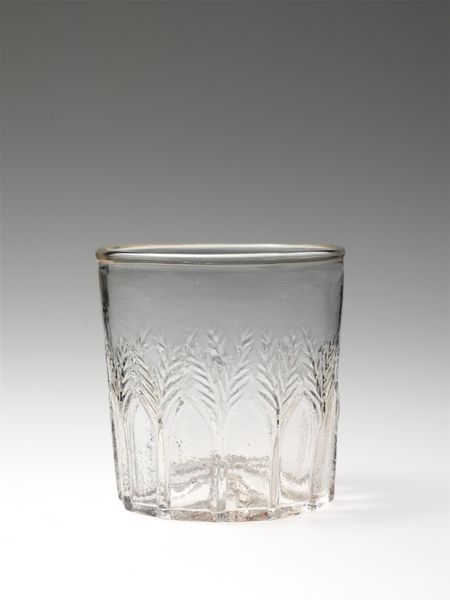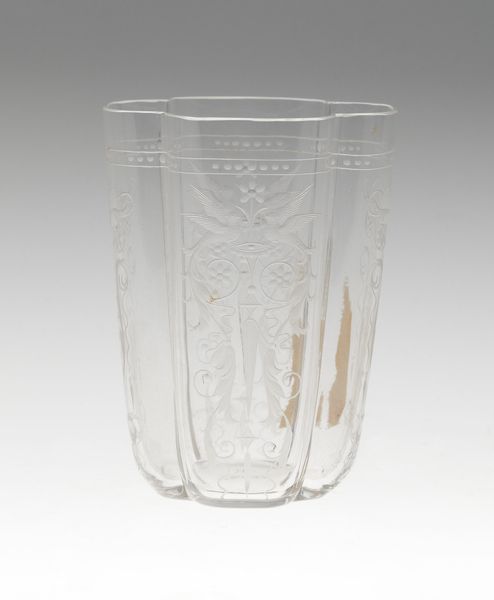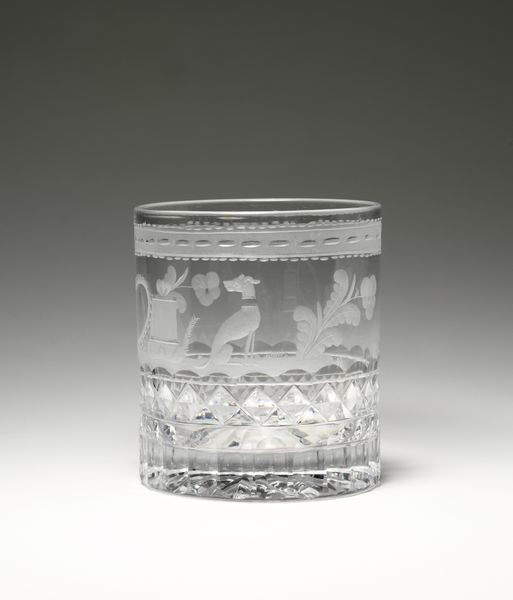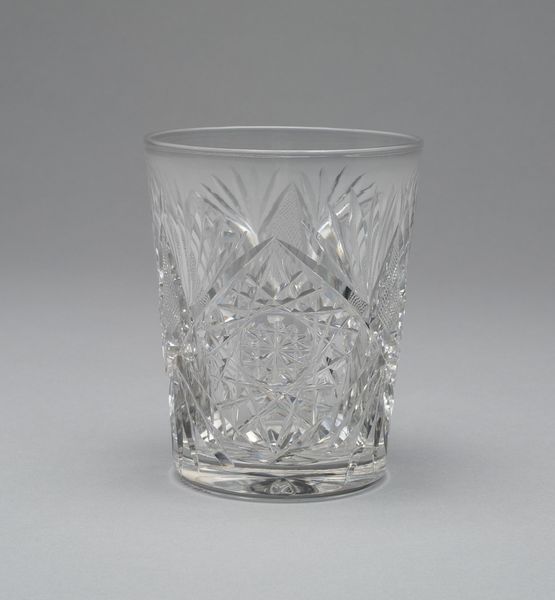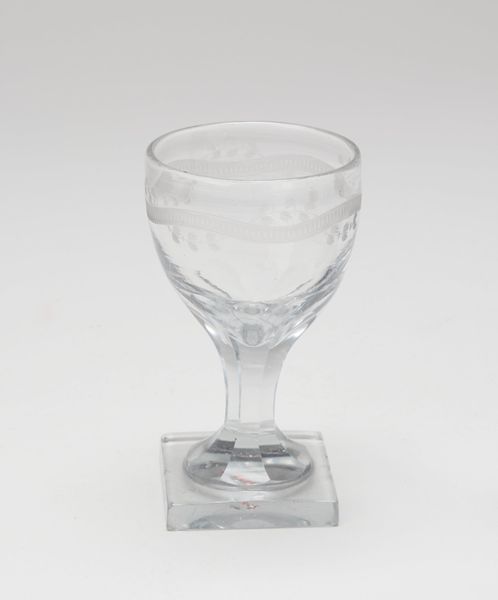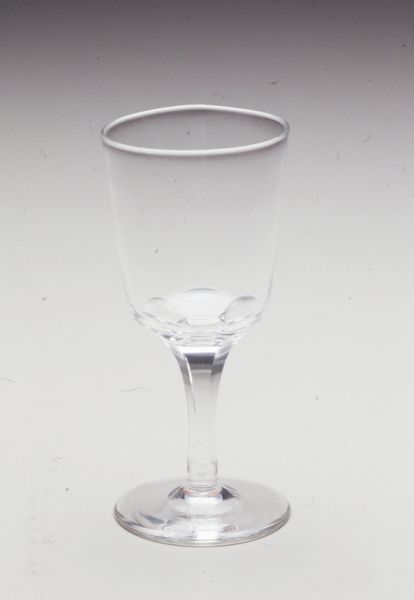
drawing, glass, engraving
#
drawing
#
glass
#
decorative-art
#
engraving
Dimensions: 3 3/4 x 3 1/8 in. (9.5 x 7.94 cm)
Copyright: Public Domain
Editor: This is a Flip Glass, believed to be crafted sometime in the 18th or 19th century. It's a glass piece with engraving, and it looks like it belongs to the decorative arts. It seems so delicate. How should we read the craftsmanship in this piece? Curator: Indeed. Consider first the interplay of transparency and surface decoration. The engraved floral motifs don’t simply adorn the glass; they become integral to its form through the very act of incising into its surface. Notice how the pattern, especially the net-like area, both catches and refracts light, altering our perception of the glass itself. Editor: That makes sense. It is less about what is drawn, and more about how the light bounces through. Curator: Precisely. The relationship between the interior space—what the glass would contain—and the exterior embellishment. Does the engraving suggest a continuity with the liquid held within, or does it create a deliberate contrast? The floral pattern evokes ideas of growth and perhaps even fermentation... Does that influence our appreciation of the form? Editor: So, it's not just a pretty design. It almost seems like a diagram about what could be in it! The shape is also elegantly simple. Curator: Indeed. We should appreciate it both visually, as it explores material expression and structural relations, but we can't forget the context it may create or evoke! Editor: This was helpful—thinking of its aesthetic qualities *with* its form feels more complete than one or the other alone. Thanks! Curator: It’s crucial to recognize the harmony between conception and technique that such an object embodies!
Comments
No comments
Be the first to comment and join the conversation on the ultimate creative platform.





